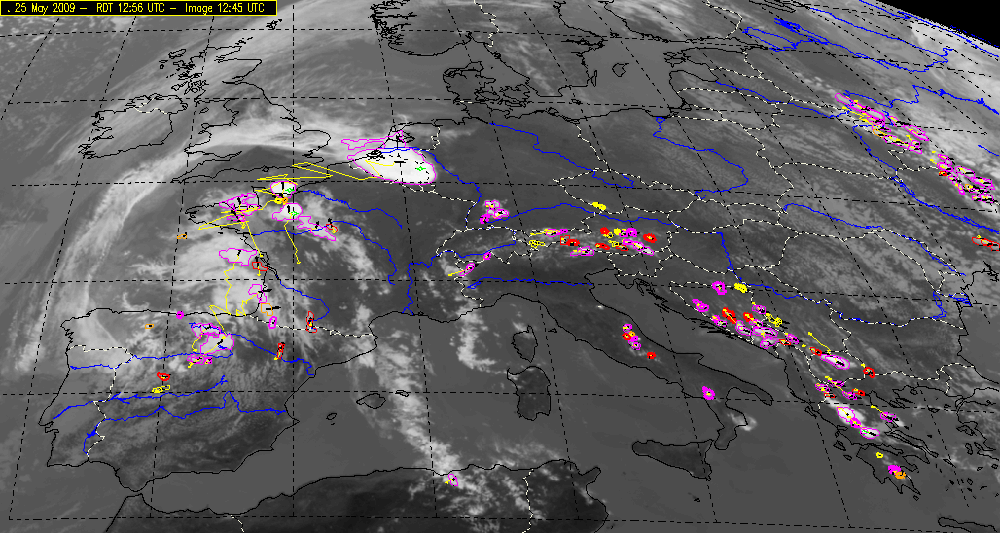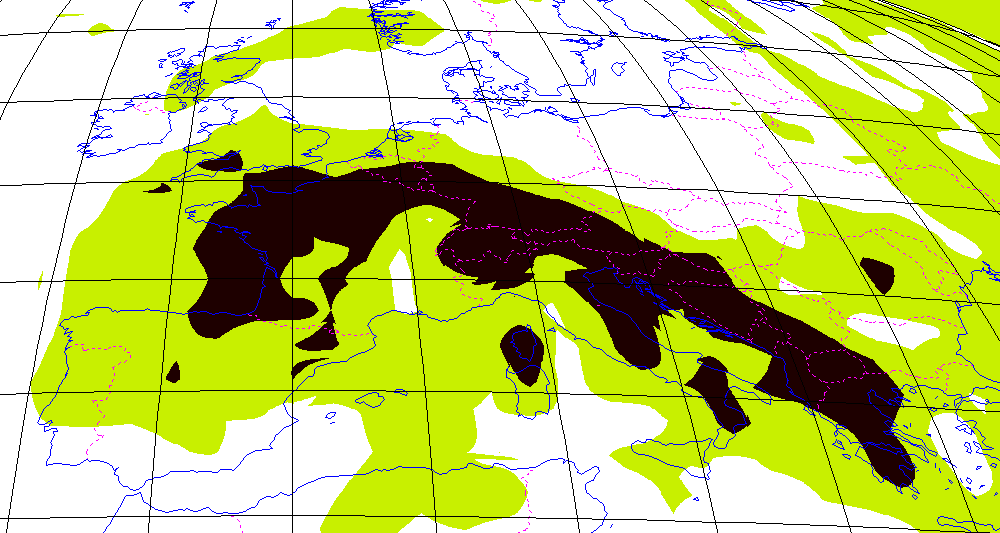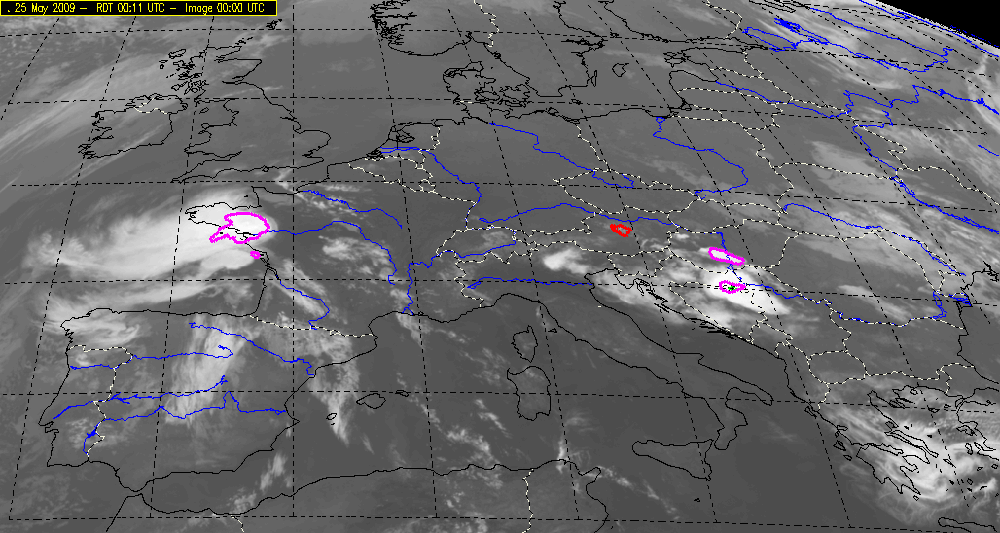
RDT loop for the whole day
Synthetic analysis at 18UTC

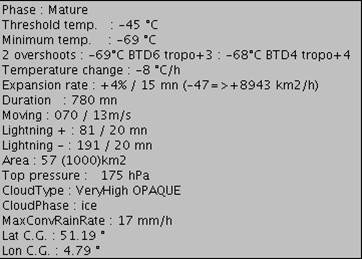 Tower base cell's attributes, including OTD description |
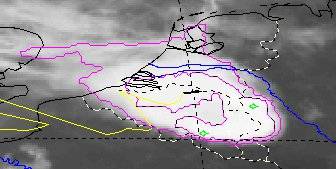 slot 13h, on 25th May 2009. Tower base and 2nd level contours. 1st level catch the whole system, whereas 2nd level highlights here U-shape top 2 overshoots are here diagnosed, marked by green dots |
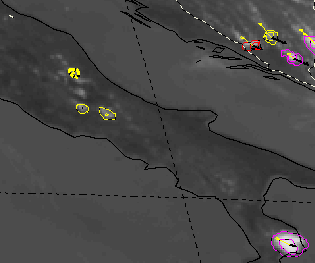 slot 11h45 UTC (valid (11h56) |
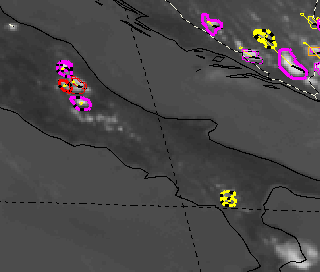 slot 12h30 UTC (valid 12h41) |
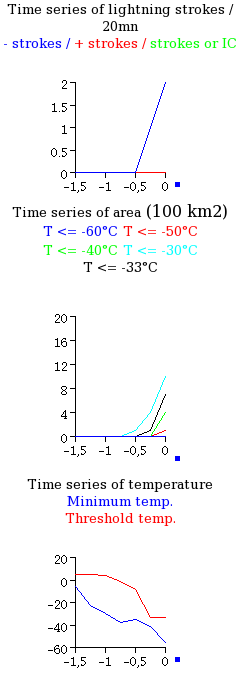 slot 13h00 central Italy |
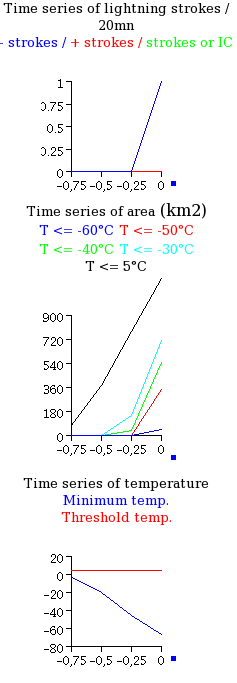 slot 13h00 south Italy |
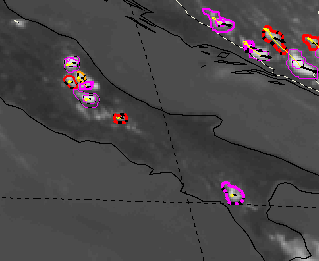 slot 12h45 UTC (valid 12h56) |
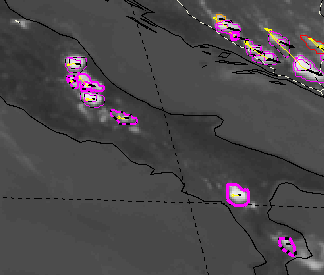 slot 13h00 UTC (valid 13h11) |
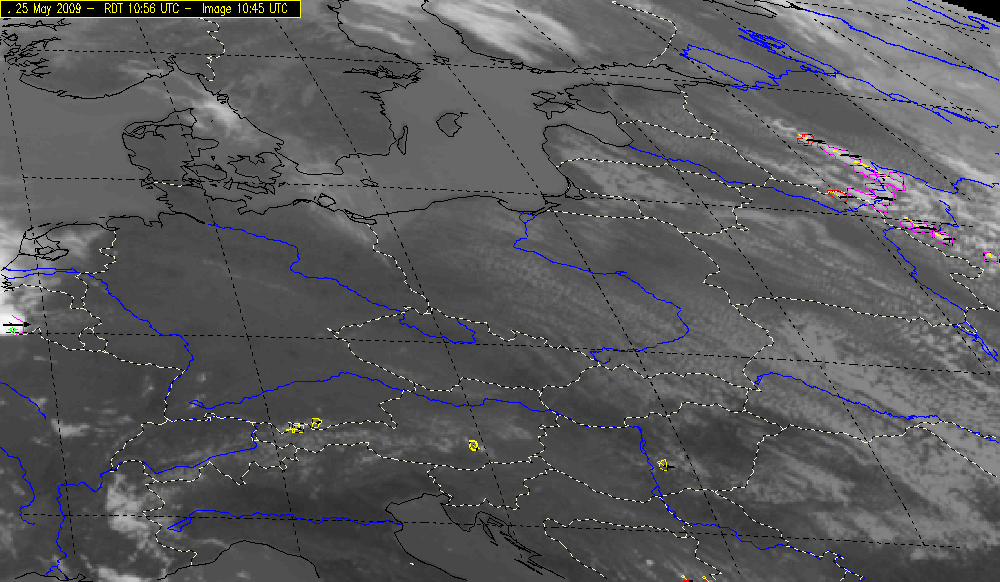
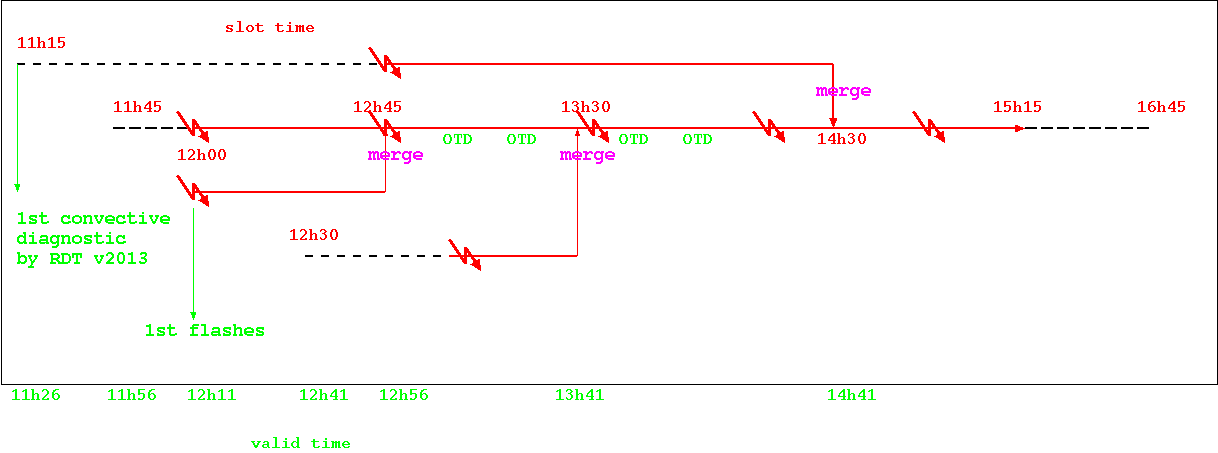
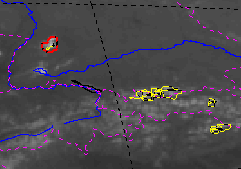 First
diagnosed cell - slot 11h15
|
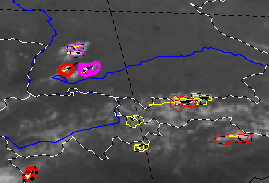 First
impacts in 2nd main cell - slot 12h
|
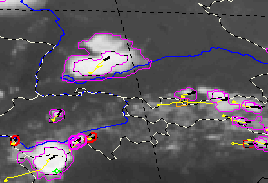 Big
merged cell before dissipation
|
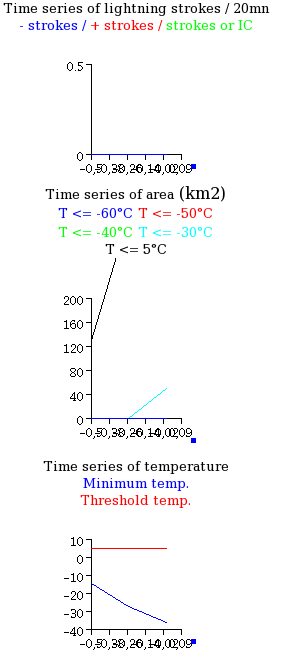 |
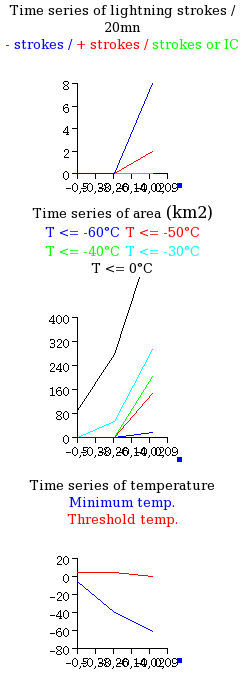 |
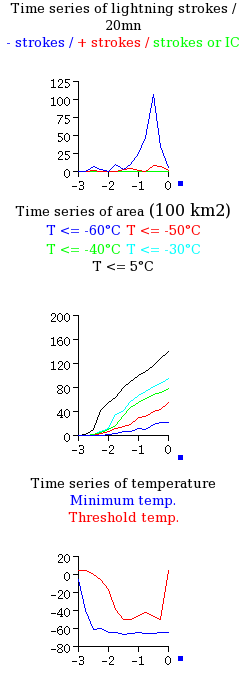 |
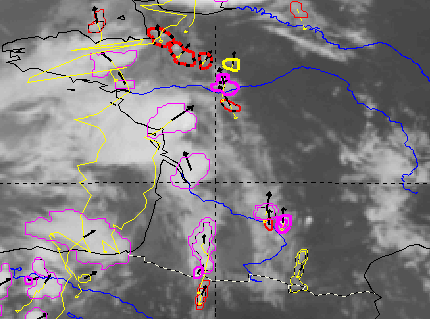 15h45 |
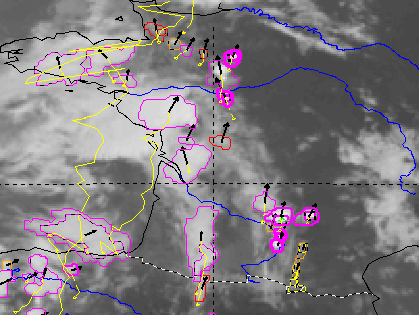 16h - 1 OTD | 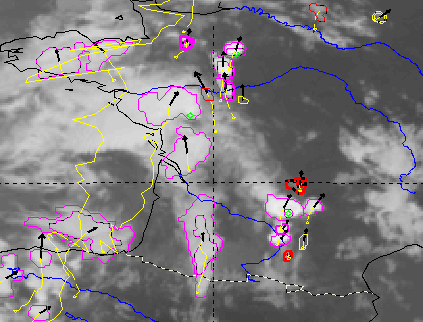 16h15 - 3 OTD |
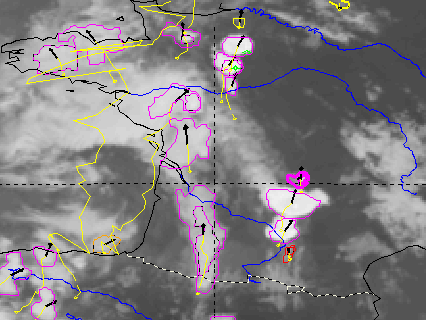 16h30 - 2 OTD |
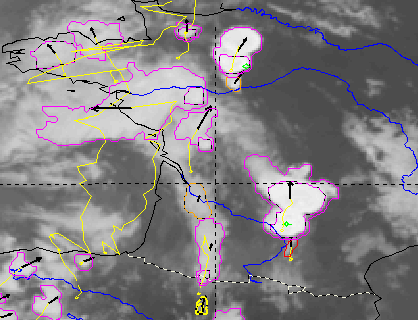 16h45 - 2 OTD |
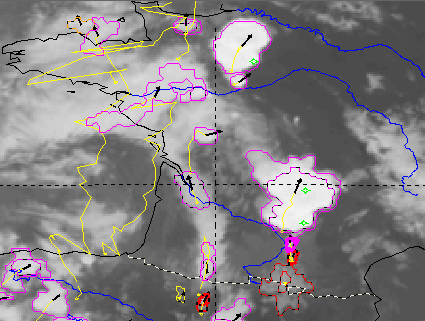 17h - 3 OTD | 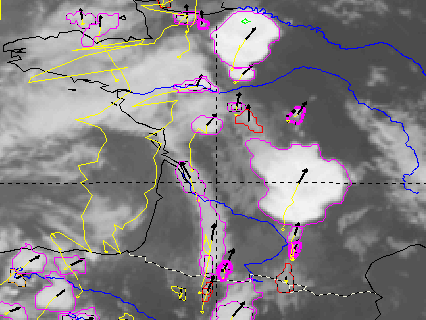 17h15 - 1 OTD |
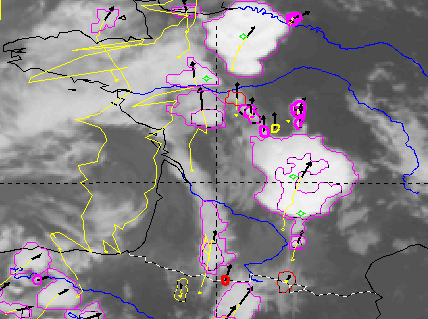 17h30 - 4 OTD |
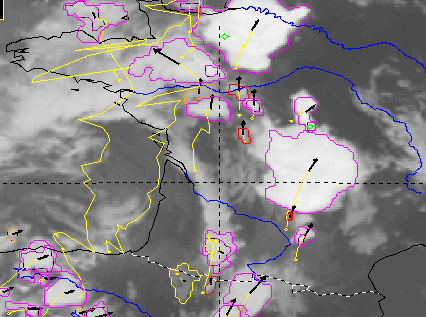 17h45 - 1 OTD |
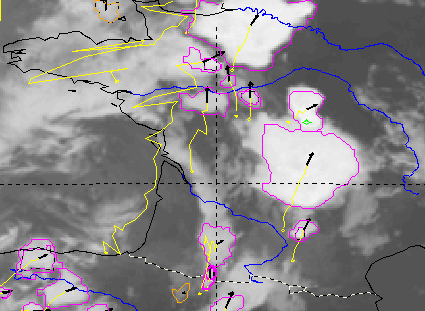 18h - 1 OTD | 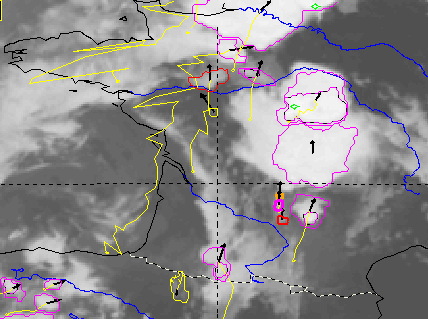 18h45 - 2 OTD |
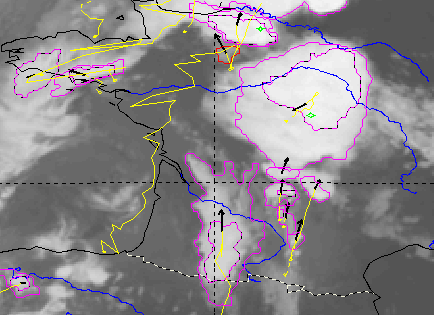 19h45 - 2 OTD |
